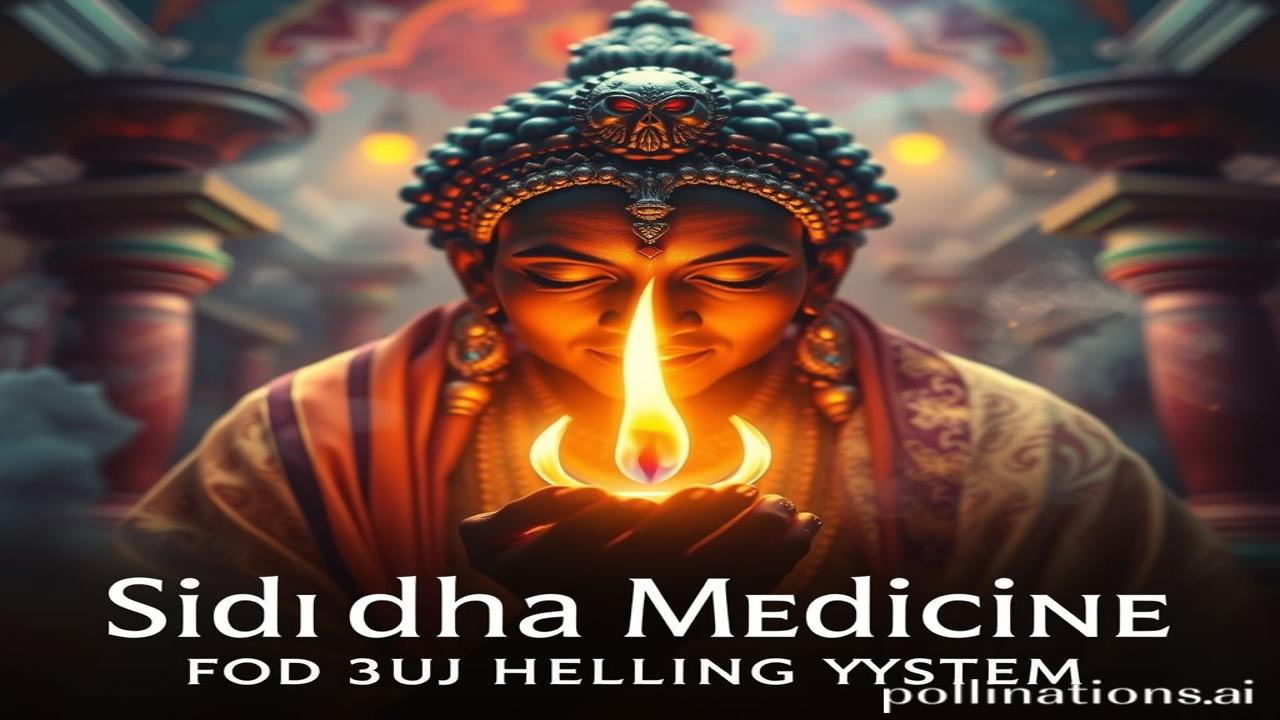Siddha Medicine: South India’s Healing System – A Timeless Tradition
Kabhi socha hai, jab koi doctor nahi the, hospital nahi the, tab humare ancestors kaise theek hote the? Picture this: A small village in Tamil Nadu, the air thick with the aroma of herbs and the rhythmic chanting of shlokas. This isn’t a scene from a movie, but a glimpse into the ancient world of Siddha medicine, South India’s very own healing tradition, a practice passed down through generations, whispers of wisdom echoing through time.
Siddha: Kya Hai Yeh? (What is It?)
Siddha, derived from the Sanskrit word “Siddhi,” meaning “perfection” or “achievement,” is one of India’s oldest traditional medical systems. It’s believed to have originated in South India, specifically Tamil Nadu, thousands of years ago. While Ayurveda focuses on balancing the three doshas (Vata, Pitta, Kapha), Siddha emphasizes the importance of the three humors: Vali (air), Azhal (bile), and Ayyam (phlegm). The balance of these humors is crucial for maintaining health.
When and Where?
Siddha medicine is believed to be at least 5000 years old, predating Ayurveda in some accounts. Its roots are deeply entrenched in the Tamil land, with strong connections to the Siddhars, enlightened beings who are believed to have mastered the art of healing and attained spiritual perfection.
Why is it Important?
Siddha is not just a medical system; it’s a holistic lifestyle that encompasses diet, exercise, meditation, and herbal remedies. It emphasizes the body’s innate ability to heal itself and aims to restore balance and harmony within the individual. In a world increasingly reliant on synthetic drugs, Siddha offers a natural and time-tested alternative, reminding us of the healing power of nature. It is part of the AYUSH ministry of India and considered a traditional medicine system like Ayurveda.
Tamil Saints and Herbal Remedies: The Foundation of Siddha
Siddha medicine draws heavily from the wisdom of the 18 Siddhars, legendary figures who are considered the founders of this system. These Siddhars, through deep meditation and observation of nature, discovered the medicinal properties of various plants, minerals, and animal products. They documented their knowledge in ancient texts, known as the Siddha scriptures, which continue to be the primary source of information for practitioners today.
ज़मीनी सच – लोग और जीवन (Ground Reality – People and Life)
Imagine a Siddha Vaidya (practitioner), an elder in the village, revered for his wisdom and healing touch. He spends hours collecting herbs from the surrounding forests, carefully identifying each plant and understanding its unique properties. “Indha mullai, romba dard ko kam karta hai,” he might say to a young apprentice, showing him how to crush the leaves and apply the paste to a wound.
Ma Lakshmi, a village farmer, relies on the Siddha Vaidya for all her health needs. From common colds to more serious ailments, she trusts in the power of natural remedies. “Doctor sahab ke pass jao toh injection dete hain, lekin Siddha Vaidya toh jadd se ilaaj karte hain,” she says, emphasizing the holistic approach of Siddha medicine. Her daughter, Priya, suffers from eczema, and the Vaidya prepares a special ointment using neem leaves and turmeric, offering hope where modern medicine has failed.
Siddha Diet and Lifestyle: A Balanced Approach
Siddha medicine doesn’t just focus on treating diseases; it emphasizes the importance of a healthy lifestyle to prevent illness. A Siddha diet is tailored to an individual’s constitution and emphasizes fresh, whole foods, avoiding processed foods and excessive spices.
धरोहर और पहचान (Heritage and Identity)
Today, Siddha medicine continues to be practiced in South India, particularly in Tamil Nadu. While it faces challenges from modern medicine, it remains an important part of the region’s cultural identity. Many people still prefer Siddha remedies for chronic ailments and as a complementary therapy to conventional treatments. The Government of India is also actively promoting Siddha medicine as part of the AYUSH system (Ayurveda, Yoga & Naturopathy, Unani, Siddha, and Homeopathy), recognizing its value in preserving traditional knowledge and providing affordable healthcare. This is a huge part of Bharatiyata because it is an indigenous knowledge system that has survived and continues to be relevant.
Siddha Today: A Resurgence of Interest
There’s a growing interest in Siddha medicine, not just in India but also globally. People are seeking natural and holistic approaches to healthcare, and Siddha’s emphasis on prevention and personalized treatment resonates with this growing demand.
मजेदार तथ्य या भ्रम-भंजक (Fun Fact or Myth-Buster)
Myth: Siddha medicine is just about herbal remedies.
Fact: While herbs are an important component of Siddha medicine, it also utilizes minerals, metals, and animal products in specific formulations. These formulations undergo rigorous purification and processing to ensure their safety and efficacy. For instance, some Siddha medicines use purified forms of mercury, gold, and silver, carefully prepared according to ancient alchemical practices.
दृश्य और भावनाएं (Visual & Sensory Layer)
Imagine walking into a traditional Siddha clinic. The air is filled with the earthy aroma of dried herbs and the faint scent of camphor. The walls are lined with shelves filled with jars containing various powders, pastes, and concoctions. A gentle breeze rustles through the leaves of the medicinal plants growing in the courtyard, carrying the whispers of ancient healing traditions. The temple bells sound a little further away in the village adding a sense of peace.
अंतिम विचार या उद्धरण (Closing Insight or Quote)
Siddha medicine is more than just a system of healing; it’s a testament to the wisdom of our ancestors and a reminder of the power of nature. As we navigate the complexities of modern life, let us not forget the ancient wisdom that lies within our own cultural heritage.
“Udal mannuku, uyir vinnuku” – The body to the earth, the soul to the sky. (A traditional Tamil saying reflecting the interconnectedness of life and the importance of embracing our roots.)
